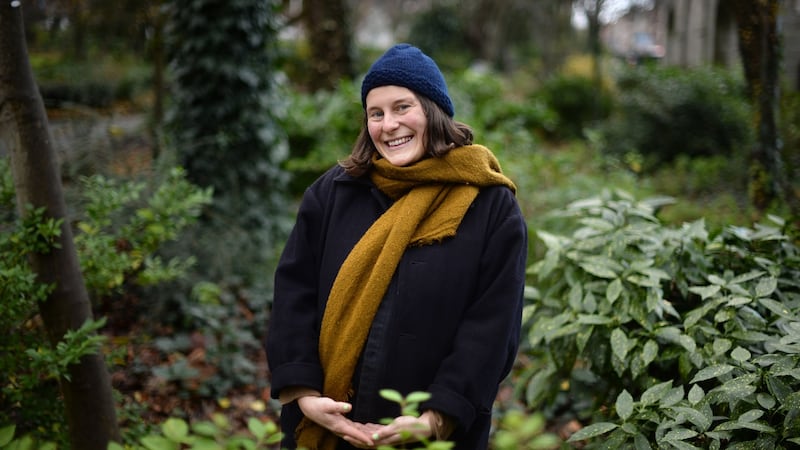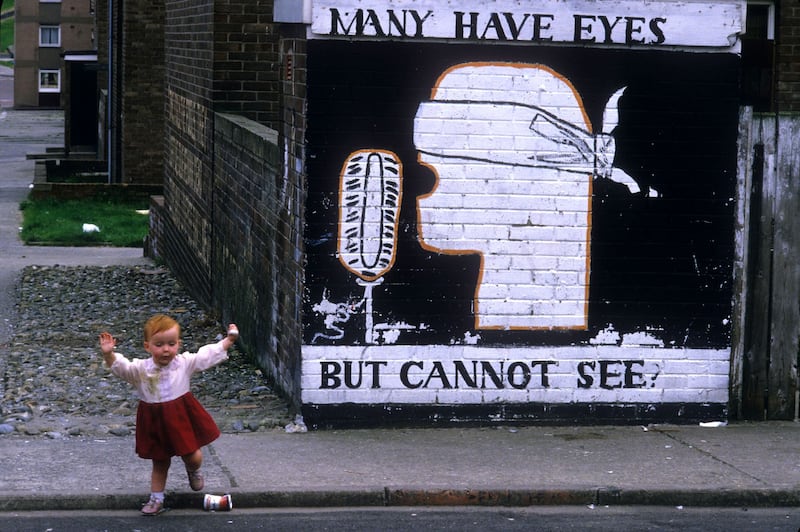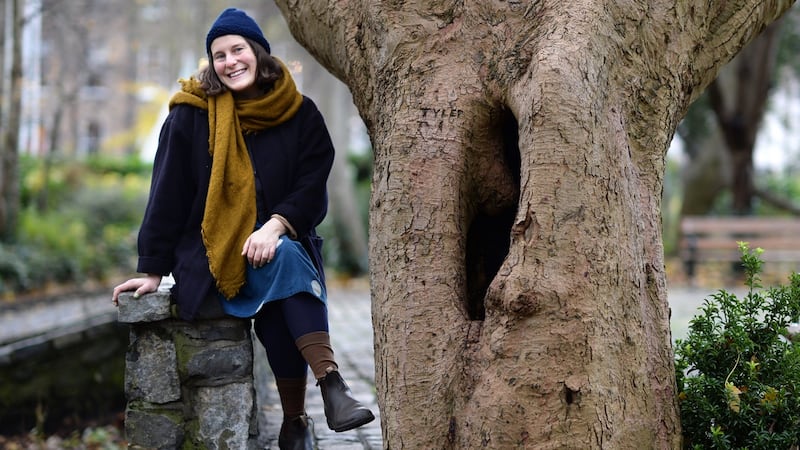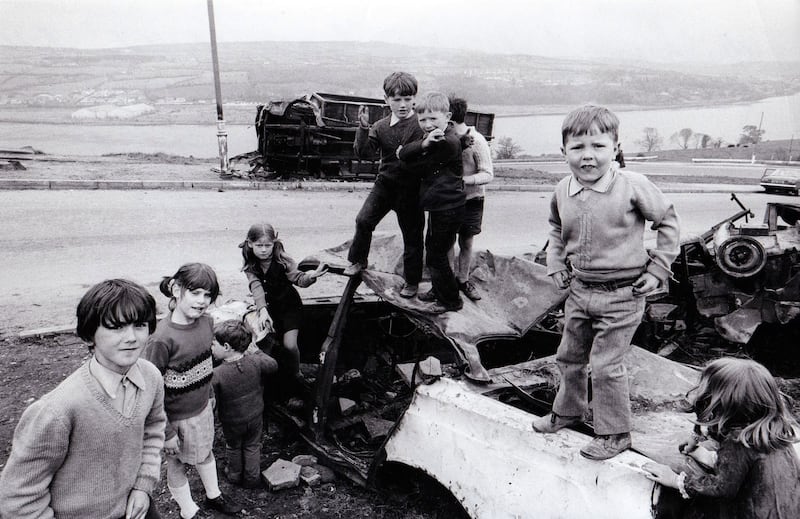Some places, writes Kerri ní Dochartaigh, “are so thin that you meet yourself in the still point. Like the lifting of the silky veil on Samhain, you are held in the space between . . . there is nothing you can do but listen for the gap in the silence, the change in the wind.”
This is what ní Dochartaigh does in her memoir, Thin Places. It is clear she has been doing it all her life and it feels inevitable that the words would finally spill through another thin place, the flimsy boundary between the imagination and the page.
“It was living inside me as a complete living thing,” she says of her book. “It was almost like I was just channelling it, or the seed was there and I was just watering it.”
Winter Nights

Like all living things, her work is grounded in and as part of its environment. This is a memoir redolent not just of place and the natural world, but its geography, history and myth, the stories that are told about them and the language used to tell them.
Nature is “not somewhere we go into”, she writes. Memory is “a white moth in flight” while peace is as “delicate” as its wings, it is about the feeling when “you’re outside and you’re on Inch Island and there’s 100 swans in the sky about you and everything around you is in harmony with each other”.
“It’s not quite nature writing and it’s not quite memoir, it’s a bit abstract. It’s hard to define,” says ní Dochartaigh. She would “never have dreamed of referring to myself as a nature writer” because she does not view nature as a separate thing. Defining the book as a “nature memoir”, she says, is of greatest use to booksellers: “If you liked Diary of a Young Naturalist and Sara Baume’s latest book, you will like this.”
Squeezing your eyes shut so tightly that it gives you a headache . . . to try to forget about the things you have seen at thresholds
For ní Dochartaigh, everything is connected: “For me, the land is literally where we’ve come from, we are defined by it but we also define it, so there is an inter-relationship there that we’ve kind of lost touch with.”
Broken city
In her case, the crucial relationship is with her “divided, broken city of Derry”. It is the place she grew up and the place which she ran from as soon as she could. “I think with place our natural instinct is always to run away, that was my natural instinct and for lots of the people I grew up with that was the same.
“I started dreaming about Derry and Donegal and it was constant and it wouldn’t stop . . . I sort of knew there was a message in it. I felt I was being called back and I remember knowing that I had to choose whether or not I continued running away, which was constant, I was just running from one place to the next.
“If I wanted to, at some point, put down proper roots then I needed to not feel this darkness when I thought about the place that had made me and the place I had come from.”
Ní Dochartaigh was born in 1983 to a teenage, mixed-religion couple – her father was Protestant, her mother Catholic. She grew up in a working-class Protestant estate in Derry. At the age of six a soldier was shot dead in front of her. At 11, she and her mother and younger brother – “not Protestant now that Dad had left” – were petrol-bombed out of their home; ní Dochartaigh survived because their cat clawed at her face until she woke in her smoke-filled bedroom.

They were forced out of their next home too "in an equally sectarian housing estate, except this one was a Catholic housing estate". In a particularly resonant paragraph, she describes sitting in class at her predominantly Protestant state grammar school, taking a Latin test about the importance of thresholds in Roman literature, "squeezing your eyes shut so tightly that it gives you a headache . . . to try to forget about the things you have seen at thresholds. The things that have come to your door in the last few months."
Ní Dochartaigh left Derry at 18 to study at Trinity College Dublin. In her 20s and early 30s she moved from city to city and experienced alcohol addiction and mental health problems and tried to take her own life.
Trauma
She posits that her generation, born at the mid-point of the Troubles, “were carrying trauma right into our bones”, a trauma that is also felt by the city itself. “If you come from somewhere that’s been through the mill as a place – our cities were literally bombed, the face of lots of places was literally completely changed – it has to have some kind of long-term impact.”

It is no coincidence, she says, that other Derry writers of a similar age now feel compelled to explore this same ground. Chief among these are Darran Anderson’s Inventory, published last year, and Séamas O’Reilly’s forthcoming Did Ye Hear Mammy Died?.
Ní Dochartaigh quotes Neil Hegarty's review of Inventory in The Irish Times: "Such work stems from the need to speak necessary and painful truths, to survey the ground ceded by a dysfunctional political process and to represent the effects of trauma to readers hungry for the day-to-day realities."
“I think we are going to find this just keeps coming and coming,” she says. “This literature needs to come out.”
Anderson, in particular, was a significant influence. She says she “cried like a baby” when she read Inventory. “I knew this book was in a way also my book . . . I felt that sense of standing on each other’s shoulders and that’s how we get strength.
“Me sharing particular parts of my story was really difficult and it’s had a long and probably deep impact on me as a person and on the people around me, as it will have done with Darran. But somehow in doing that we give permission to other people to feel like they can share their story.”
Make peace
Ní Dochartaigh returned to Derry in 2015. Coming home – and writing the memoir – has allowed her to heal and to “make peace with the place and with the child I was when I grew up there . . . but also with the parts of me that had experienced trauma there.”
She now lives in Co Westmeath with her partner and is expecting her first baby. She had thought she was unable to have children: “It’s a wee Covid miracle.”
“I’m very grounded and I’m very earthed here, really for the first time I think . . . it feels like the closing of a circle but also the beginning of another one.”
This broken, beautiful city has changed
Perhaps unsurprisingly, she has begun work on her next book – about nature and time. “Time is the ultimate part of the natural world but it’s the ultimate part of the human world because obviously it’s a human construct but we can’t halt the cycle of the seasons.”
This is as true for place as it is for its people. If trauma is in the fabric of the land, says ní Dochartaigh, “in a way that’s a good thing because that means it will go, it will regenerate.
“Even during the pandemic, at a time when we were all held inside, and still are, look at what nature has given us consistently – the reminder that seasons come and go and there are cycles of existence, that this is a fallow time of loss but after that will come something really good and really new. That’s what culture and literature does as well.”

So too do cities. By the book’s end, ní Dochartaigh is able to write of Derry that “this broken, beautiful city has changed”. There are problems and challenges, not least the scars of the Troubles, “that run too deep to see” and the re-emergence of a mental if not physical Border due to Brexit. Still, “crucial changes” have “happened in spaces that cannot quite be mapped”.
Her “thin places” are also “safe spaces”, where lands and people have known emigration and loss, but also hope. Despite everything, there remains “a flicker of dancing light for all those who stayed”.
Thin Places by Kerri ní Dochartaigh is published by Canongate Books

















